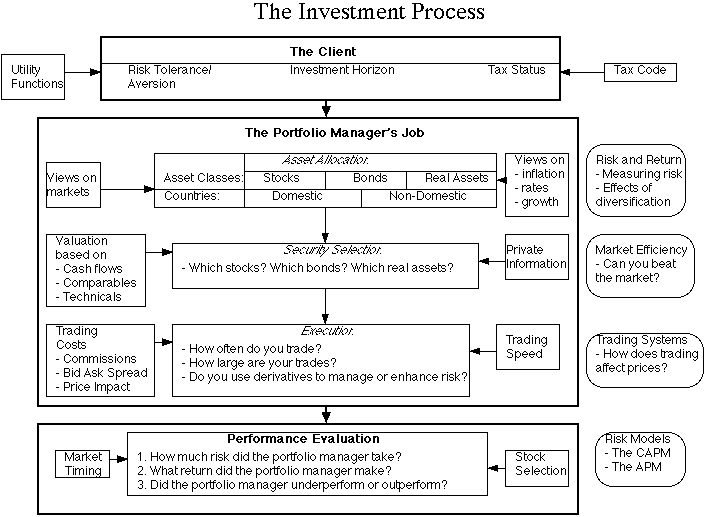The Asset Selection Decision
As investors, we would all love to have the capacity to time markets well, since this would largely relieve us of the responsibility of having to pick individual investments well. Given the difficulties of market timing, however, we have to select assets within each asset class wisely to earn those excess returns we seek so avidly.
As with asset allocation, asset selection can follow a passive route or an active one. A passive asset selector either picks investments randomly within each asset class or follows a strategy of diversifying fully across investments within each class. The latter strategy is called indexing, and the proportion invested in each asset is in proportion to its market value. When passive asset selection is combined with passive asset allocation, the objective is no longer beating the market, but earning a return commensurate with the risk taken on. While this strategy may be particularly exciting or ego gratifying, it is the least costly in terms of transactions costs, investor time and often taxes.
Active asset allocation involves picking individual assets within each asset class that are likely to outperform the rest of that asset class, i.e., buying undervalued assets and selling overvalued assets. As is the case with market timing, asset selectors subscribe to the very different approaches to finding these misvalued assets. Technical analysis rely on charts and indicators (price and volume) to find these assets, while fundamental analysis relies on publicly available information to arrive at the same conclusions. Even among fundamental analysts, there are wide differences, with some using full fledged financial valuation models to find under and over valued assets, some using multiples and comparables to do the same and some relying on more qualitative criteria to create their portfolios. The evidence on whether technical and fundamental analysis is rewarding is mixed. While dozens of individual strategies seem to beat the market, on paper, the investors who use these strategies do no seem to earn the same excess returns. This may be partially attributed to the failure of these investors to adopt these strategies in a disciplined manner, but it is far more likely to reflect the difficulties and costs associated with putting these strategies into practice.
There is one final approach to asset selection, which the evidence suggests yields the surest excess returns, and that is the use of private information to pick assets. The irony, of course, is that this is precisely the type of trading that insider trading laws are designed to stop. The fine line between private and inside information, notwithstanding, investors and portfolio managers continue to search for information that will give them a differential advantage over others in the market.

